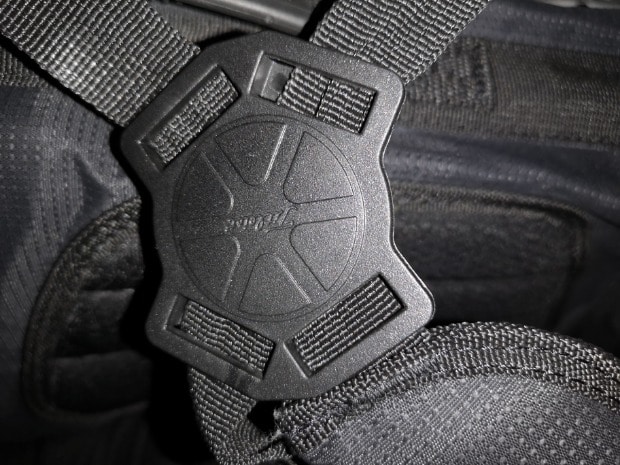Can You Use a Driver on the Fairway? Debunking Golf Myths
The driver is the longest and most powerful club in a golfer’s bag, and it’s typically used to tee off on par 4s and 5s. But can you use a driver on the fairway?
The answer is yes, but it’s not always the best idea. If you have a good lie and you’re looking to hit a long, powerful shot, then using a driver on the fairway can be a great option. However, if you have a poor lie or you’re not confident in your ability to control the driver, then it’s probably best to use a different club.
In this blog post, we aim to put this debate to rest and provide a definitive answer to this perplexing question.
When And How To Hit Driver From The Fairway – Golf Tip?

Hitting a driver from the fairway can be a risky but rewarding shot in golf. It’s a valuable skill to have in certain situations, but it requires careful consideration and execution.
Learning when and how to execute this shot can greatly benefit your game and help you navigate challenging course layouts.
Assess the Situation
Before attempting a driver from the fairway, evaluate the conditions and factors that influence your decision. Consider the distance to the target, the lie of the ball, wind direction and strength, and any potential hazards that may come into play. If the situation seems favorable and the reward outweighs the risk, proceed with the shot.
Choose the Right Moment
Hitting a driver from the fairway is best suited for specific scenarios, such as when you need maximum distance to reach the green or when there are hazards like bunkers or water that you need to carry. If you have a clear line of sight and ample room to execute the shot without endangering other players, it may be the right moment to attempt it.
Adjust Your Setup
When using a driver from the fairway, make adjustments to your setup to optimize your chances of success.
Tee the ball slightly lower than you would for a regular tee shot, as this will help you maintain better control and launch the ball with a slightly lower trajectory.
Position the ball slightly forward in your stance to encourage an upward strike on the ball.
Execute the Shot
During the swing, focus on making a smooth and controlled motion. Resist the temptation to swing too hard, as this can lead to poor contact and loss of control. Aim to sweep the ball off the turf, striking it just before hitting the ground.
Keep your hands ahead of the clubhead at impact to promote a higher launch angle and reduce the risk of grounding the club.
Practice and Patience
Hitting a driver from the fairway requires practice and patience to master. Spend time at the driving range and on the course, experimenting with different lies and situations.
Understand that it may not always be the best option, and be prepared to lay up or use a different club if the conditions are not favorable. With time and experience, you can add this shot to your repertoire and use it effectively to your advantage on the golf course.
Maintaining Your Golf Equipment: Driver and Fairway Woods

Proper maintenance of your golf equipment, especially your driver and fairway woods, is essential to ensure peak performance and longevity on the course.
Regular care and attention to these clubs will not only help you maintain consistency in your game but also protect your investment.
Cleaning
After each round of golf, take the time to clean your driver and fairway woods thoroughly. Use a damp cloth or towel to wipe off any dirt, grass, or debris on the clubheads, shafts, and grips. This simple step prevents the buildup of grime and preserves the club’s finish.
Inspect for Damage
Regularly inspect your driver and fairway woods for any signs of damage or wear. Check for cracks, dents, or loose components. Pay special attention to the clubface and grooves. If you notice any issues, consider taking them to a professional club repair shop.
Storage
When not in use, store your driver and fairway woods in a cool, dry place. Avoid leaving them in extreme temperatures or direct sunlight for extended periods as this can damage the club’s materials and performance.
Cover your Clubs
Invest in headcovers for your driver and fairway woods. Headcovers protect the clubheads from scratches and dings, especially during transportation. Ensure you put the headcovers on after each shot to prevent accidental damage.
Regripping
Grips naturally wear out over time, affecting your grip and control over the club. If you notice signs of wear or loss of tackiness, consider regripping your driver and fairway woods. Many golf stores offer regripping services or provide DIY kits.
Adjustments and Tune-ups
If your driver and fairway woods come with adjustable features, such as adjustable loft or lie angles, periodically check and adjust them according to your swing changes or course conditions.
Also, consider getting a professional club fitting to optimize your equipment for your swing.
Avoid Hitting the Ground
When using your driver and fairway woods, try to avoid hitting the ground before making contact with the ball. Hitting the ground can cause damage to the club’s sole and affect its performance. Practice a smooth sweeping motion to improve your ball-striking.
Check Shaft Alignment
Occasionally inspect the alignment of your shaft to ensure it’s correctly positioned. A misaligned shaft can lead to inaccurate shots and inconsistent performance. If you suspect any issues, consult a golf professional for assistance.
Use Proper Technique
Lastly, using the proper technique and form while hitting with your driver and fairway woods can reduce unnecessary stress on the clubs. A well-executed swing decreases the risk of clubhead damage and promotes better ball flight.
Frequently Asked Questions
Using a driver on the fairway is a common question among golfers. In this quick FAQ, we will provide clear and concise answers to help you understand the rules and best practices.
Why is a Driver Challenging to Use on the Fairway?
A driver’s low loft makes it difficult to control shots on the fairway, as it produces less backspin, making it prone to slicing or hooking.
Can a Driver be Helpful on Long Par-5 Holes?
Using a driver on long par-5 holes can be beneficial, as it allows you to maximize distance off the tee, setting up a shorter approach.
Should Beginners Use a Driver on the Fairway?
Beginners are advised to avoid using a driver on the fairway initially, as fairway woods or hybrids are more forgiving and easier to handle.
What are the Alternatives to a Driver for Fairway Shots?
Apart from fairway woods and hybrids, long irons (3-iron, 4-iron) can also be used for fairway shots, offering better control.
How to Improve Control with a Driver on the Fairway?
Practice regularly, focus on a smooth swing, and try to reduce excessive power to gain better control with a driver on the fairway.
Can Using a Driver on the Fairway Damage the Club?
Using a driver on the fairway occasionally is unlikely to cause significant damage, but repeatedly hitting the ground or hard surfaces may affect the club’s longevity.
Conclusion
A driving iron is a valuable golf club designed to provide golfers with increased control and accuracy on their long shots.
Its smaller head and flatter face make it an excellent option for hitting off the tee or from the fairway. By incorporating a driving iron into your game, you can enhance your performance and achieve better results on the course.



![What Is A Bogey In Golf? [Explained] What-Is-A-Bogey-In-Golf](https://giftedgolfers.com/wp-content/uploads/2023/01/What-Is-A-Bogey-In-Golf-300x157.jpg)

![How To Clean A Golf Bag? [Step-By-Step Guide] how-to-clean-a-golf-bag](https://giftedgolfers.com/wp-content/uploads/2023/06/how-to-clean-a-golf-bag-300x157.jpg)
